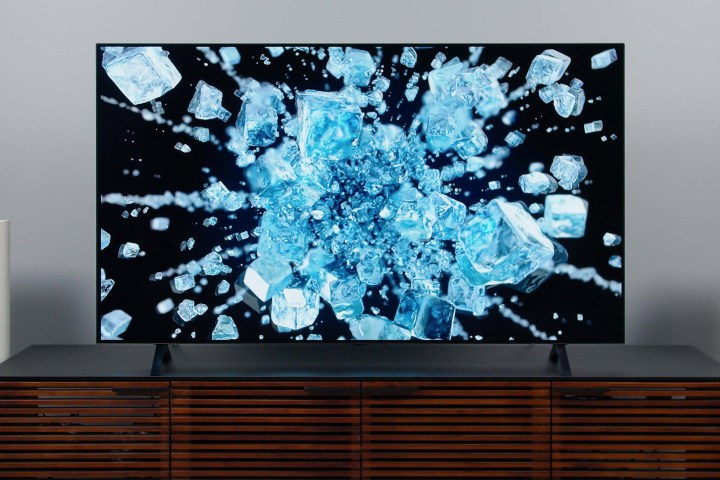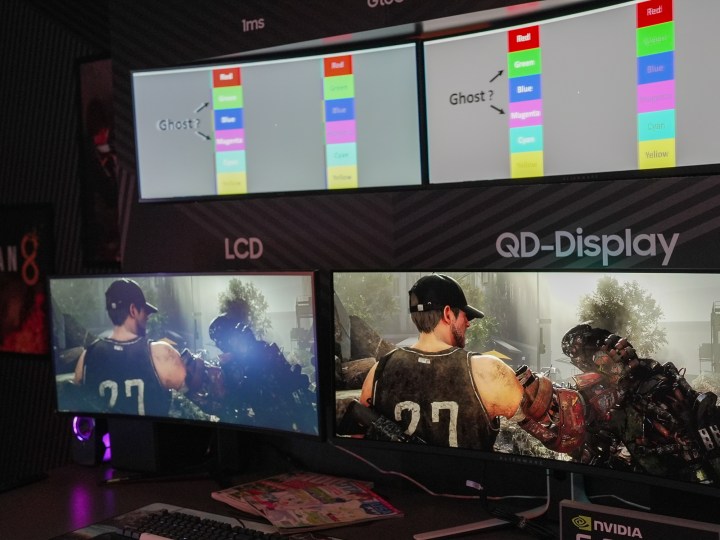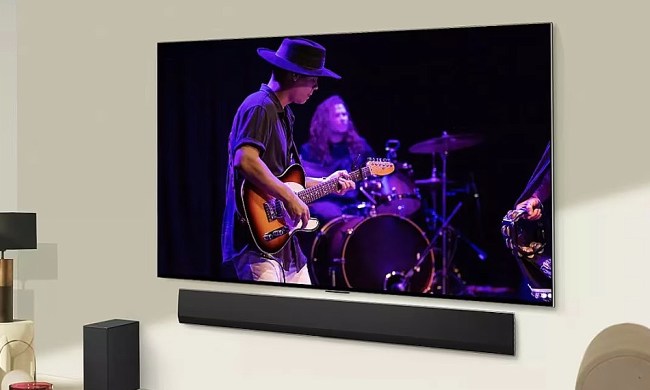QD-OLED has been making headlines since its introduction at CES 2022. Folks are excited about it, and for good reason. The new technology, made by Samsung Display, takes OLED technology to the next level and is a direct competitor to LG’s conventional OLED TV tech, which has monopolized the consumer TV market since its introduction roughly 8 years ago. So, does LG need to be worried?
The answer is yes, but not right away.
More to the point, I don’t think QD-OLED poses any immediate threats to LG Electronics’ TV sales, which I’ll explain below. But in the long term, I do think LG needs to be ready to slap back at Samsung and to do that, LG Display is going to need to come up with something big of its own.
A quick reminder: Samsung Display and LG Display are separate companies from Samsung Electronics and LG Electronics. Samsung Display and LG Display make the display panels that go into all kinds of things like computer monitors, cell phones, cars and trucks, those big screens you see at stadiums, and, yes, televisions. Those two companies sell their displays to any company that will buy them, and that includes competing brands. For example, Samsung Display sells screens to Apple for use in certain iPhones, as well as to Samsung Electronics for use in its OLED smartphones. For its part, LG Display sells screens to a bunch of different brands, too. In fact, it sells the same OLED TV screens to Panasonic, Sony, Philips, and, yep, LG Electronics.
Samsung Electronics and LG Electronics, by distinction, are responsible for piecing together and manufacturing the consumer devices that we buy and put in our pockets, backpacks, and living rooms. One cadre of companies sells screens, the other the actual devices those screens go in.
I draw this distinction because it is fundamental to understanding where there is cooperation and where there is competition.
Sidebar: There’s also such as thing as “coopetition,” where competing companies cooperate for mutual benefit. But as far as I can tell, no such thing is happening between Samsung-anything and LG- anything because they are — well, you could say they are bitter rivals.
Life is good for LG

Don’t hold off on buying an OLED TV in hopes that QD-OLED is going to become affordable any time soon.
For now, LG Electronics is in a really secure position. It has more than eight years of scaling up its OLED TV division. It is very good at making OLED TVs, proficient at making lots of them, and the prices of those TVs continue to come down year after year, making them affordable to a growing audience of customers. The fact that QD-OLED is coming along isn’t going to make much of a dent in LG’s TV sales — at least for now — because its OLED TVs are going to remain relatively affordable given the premium picture quality they offer, whereas the first few years of QD-OLED TVs are going to be ridiculously expensive and well out of reach for all but the most wealthy customers.
Plus, let’s not forget that LG’s conventional OLED TVs look great! There’s a reason they get top scores every year and wind up on multiple best-tv-of-the-year lists. All this talk about how great a technology QD-OLED is tends to overshadow the fact that today’s conventional OLED TVs are looking better than ever, and they started from an amazing place already. It’s also important to note that Sony hasn’t abandoned LG’s W-OLED technology either. It’s making both W-OLED TVs and QD-OLED TVs, recognizing that QD-OLED is just the latest advancement of something that was already awesome, and a pricey one at that.
My buying advice? Don’t hold off on buying an OLED TV in hopes that QD-OLED is going to become affordable any time soon. It won’t. Standard OLED is still going to be … well, the standard for affordable excellence in picture quality for several years to come. If you only take one thing away from this article, that’s what I’d hope it would be.
The future for LG Display
With all of that said, LG Electronics does need LG Display to step up, because there’s no way LG Electronics is going to buy QD-OLED panels from Samsung Display. To keep LG TVs at the bleeding edge of technology, LG Display is going to need to come up with its own technological marvel.
I’m sure LG Display is paying attention to this QD-OLED business, but providing panels for TVs isn’t its only source of revenue. LG Display has the market cornered on transparent OLED, which has a massive untapped market. Transparent OLEDs can replace the windows in your office building, or on a train or an airplane. And flexible OLED screens are only just beginning to appear in devices. Plus LG Display is going to continue its huge business of providing screens to phone makers and auto manufacturers.
But an area in which LG Display hasn’t been as VISIBLY involved is work with quantum dots. Yes, quantum dots are at work in the latest LG QNED mini-LED TVs. But we haven’t heard about LG working on an all-emissive quantum dot display, aka, QDEL, the way Samsung is rumored to be doing.
Does Samsung have a leg up?

Stepping back for a second, in the TV sector alone, Samsung Display already makes VA LCD panels, now it is also making QD-OLED panels, and it is rumored to be heavily invested in developing QDEL panels as well. And of course, Samsung Display does all kinds of business in other areas just as LG Display does. But if we go by the facts we have and sprinkle in a bit of “sources familiar with the matter” input, Samsung Display is poised to make some big moves in TV display tech. And none of that IP is going to go to LG Electronics. In fact, anything Samsung Display can patent, it will, and that means that LG Display, and LG Electronics by extension, is going to be locked out of it.
So, you can see that, when it comes to the long game, LG Electronics really needs for LG Display to have something cooking if it wants to keep bragging rights to having the best-looking TVs you can buy. In the short term, LG is going to do just fine. Great even. But in the long term? Well, I think it will depend on whether LG Display has something cooking in its super-secret tech test kitchen. And if it does, it’s going to need to be super tasty.



